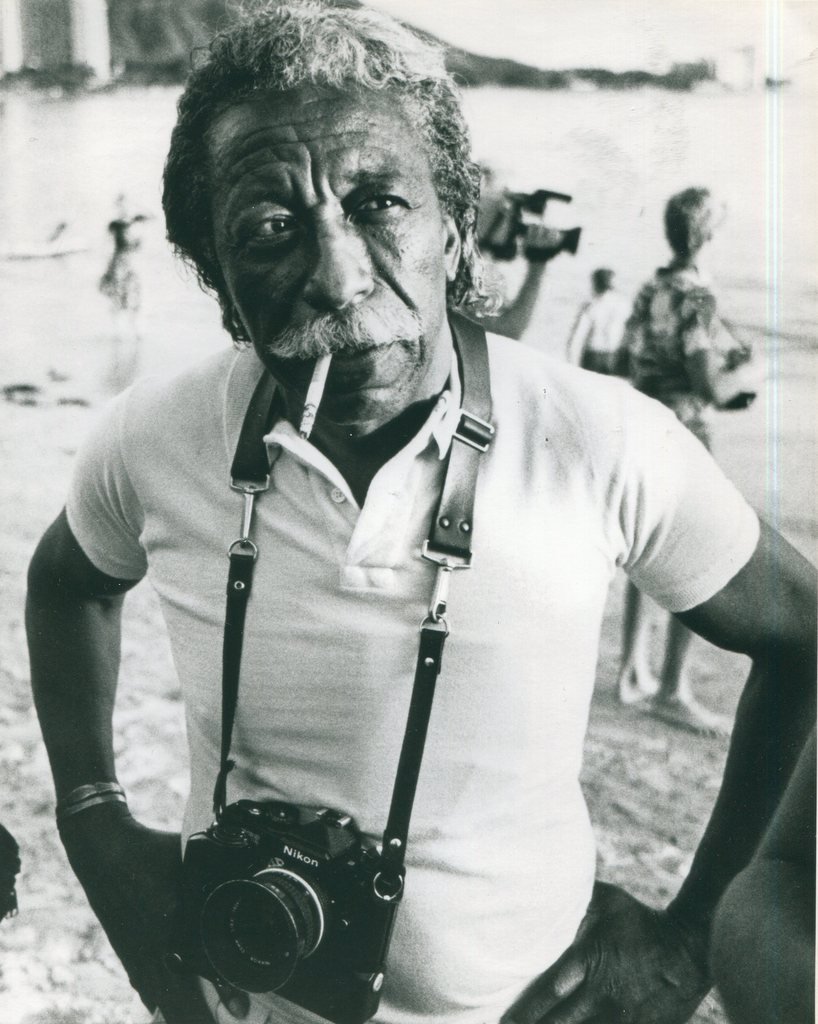Gordon Parks in Gloucester, 1943
The photographer Gordon Parks (1912–2006) not only captured American society in images, he molded it with his own outsized personality.
As a Black fashion photographer — before there was such a thing — he worked for Vogue and Vanity Fair. He was a longtime contributor to the picture magazines — Life, Look, Saturday Evening Post. He made a living photographing fashion and high society, but he also traveled America, documenting working-class lives for government agencies.
As a director, his 1971 movie Shaft invented gangsta-cool, and ushered in the era of Blaxploitation films. He composed a ballet, Martin, honoring the Civil Rights leader. He wrote books, including a 1967 autobiography, A Choice of Weapons.
Legendary photographer Gordon Parks
Parks was also a poet, painter, musician, and visionary. He moved easily among the A-listers of 20th century Black America — he was friends with everyone from Ellington to Ali, and godfather to Malcolm X’s son. Sesame Street’s “Gordon,” the neighborhood Everyman, is named for Gordon Parks. He was handsome, stylish, talented and charismatic.
Parks’s connection to Gloucester was brief, but woven into his legacy as a social advocate. In one of the many New Deal–era social programs, the offices of the Farm Security Administration and Office of War Information hired photographers to document America’s working class. That work — simple, direct, rife with plainspoken narrative — is preserved in millions of images by photographers like Parks, Margaret Bourke-White, Walker Evans, Dorothea Lange, and others in the Library of Congress archives.
Parks came to Cape Ann in 1943, and photographed the fishing community in their homes and on their vessels. Parks went to sea on the F/V Alden, captain Lorenzo Scola, off the Gloucester coast.
In the following portfolios of Parks’s Gloucester photos, he shows the crew pushing off in skiffs to net mackerel, as well as in some posed candids of the men on the vessel and on the docks. Note the shot of the crew napping, one man with his cigar still clenched in his teeth.
Parks only goal was to show working people doing work. In that way, his Gloucestermen got roped in with photos of small farmers and store owners, street-side vendors, and mechanics. The photographers that the FSA/OWI project sent out into the field made a living during hard times, no small thing. And while they were presumably on a mission to propagandize for America, instead they simply narrated its story.
Parks commanded respect, both as a public figure and as an artist. His work is generously preserved and annotated by his own Gordon Parks Foundation. A New York Times feature captures his essence, in a breathless 2018 retrospective. Numerous international exhibitions since his death have kept his work in view, and the actual Library of Congress archives are available to the public.
*Note: All caption information supplied by the Library of Congress
I. The Crew of the Gloucester Fishing Vessel Alden











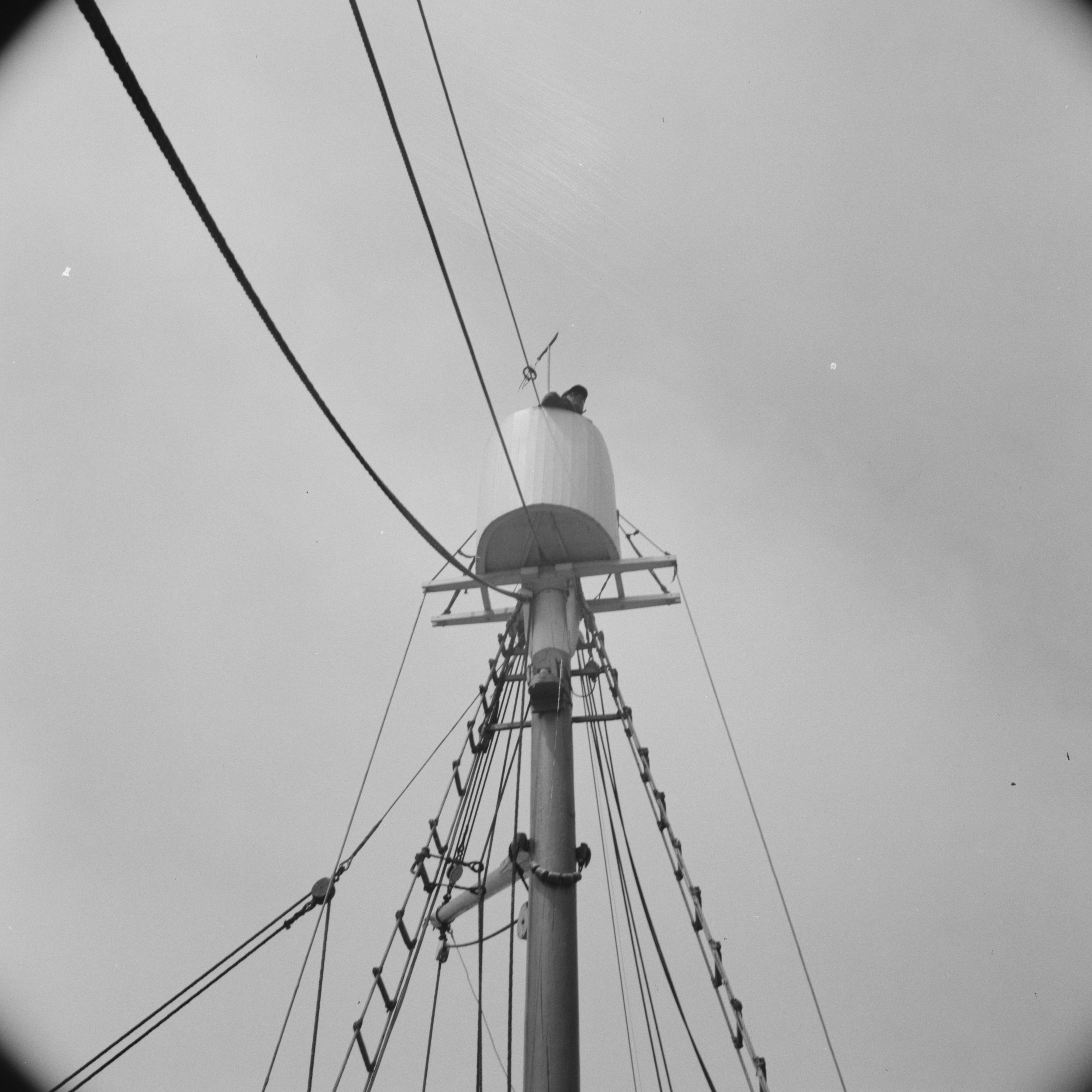




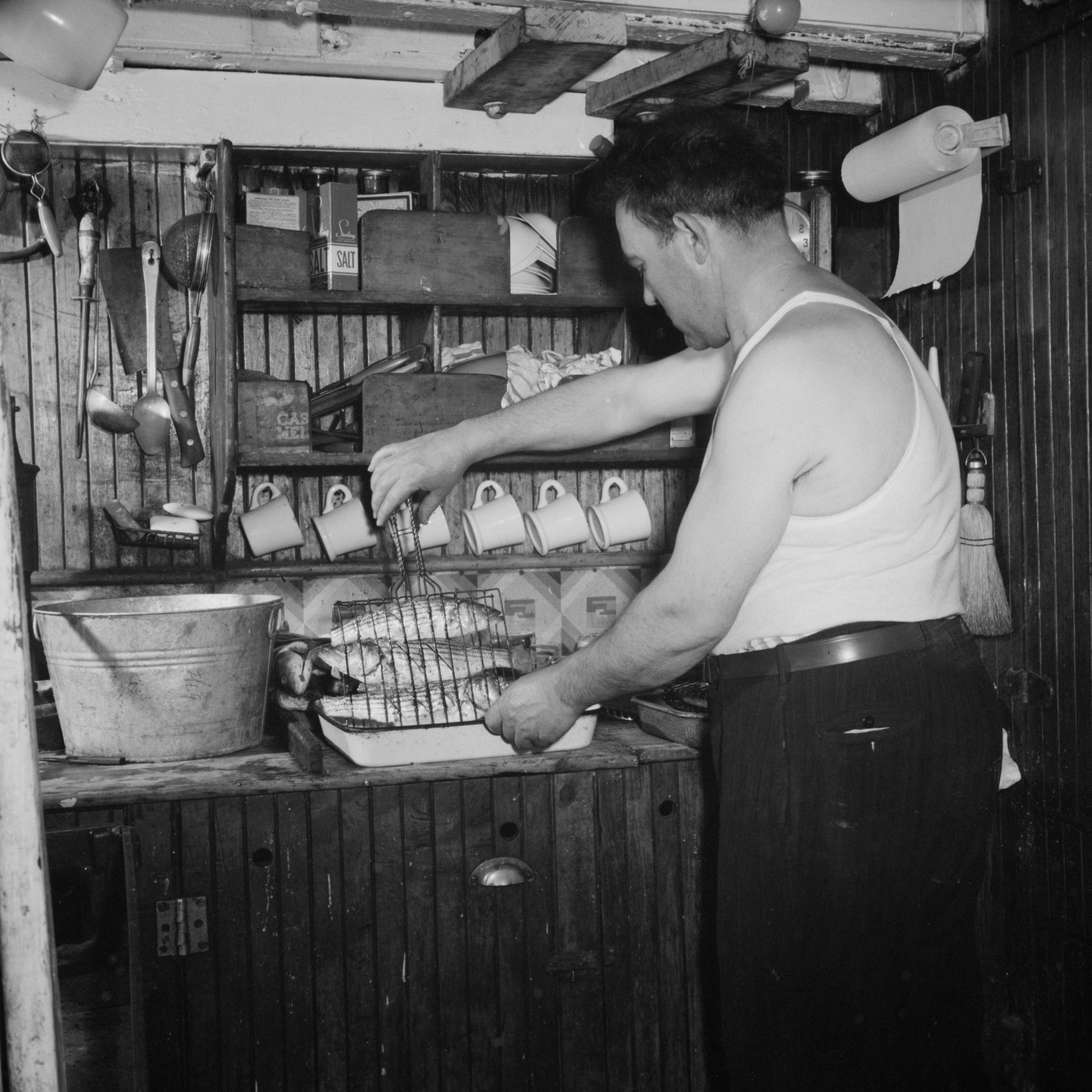
II. On the Hunt for Mackerel with the F/V Alden






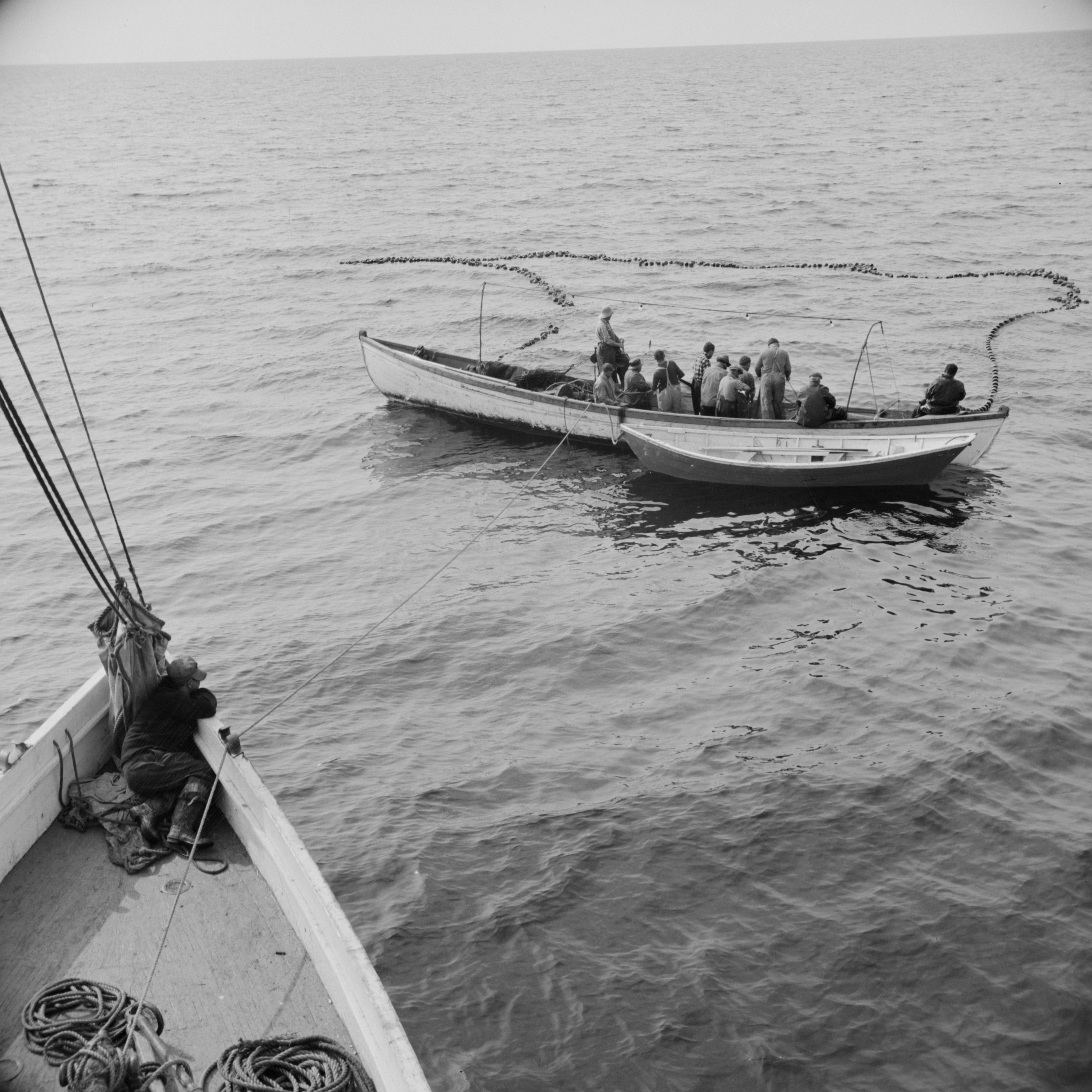
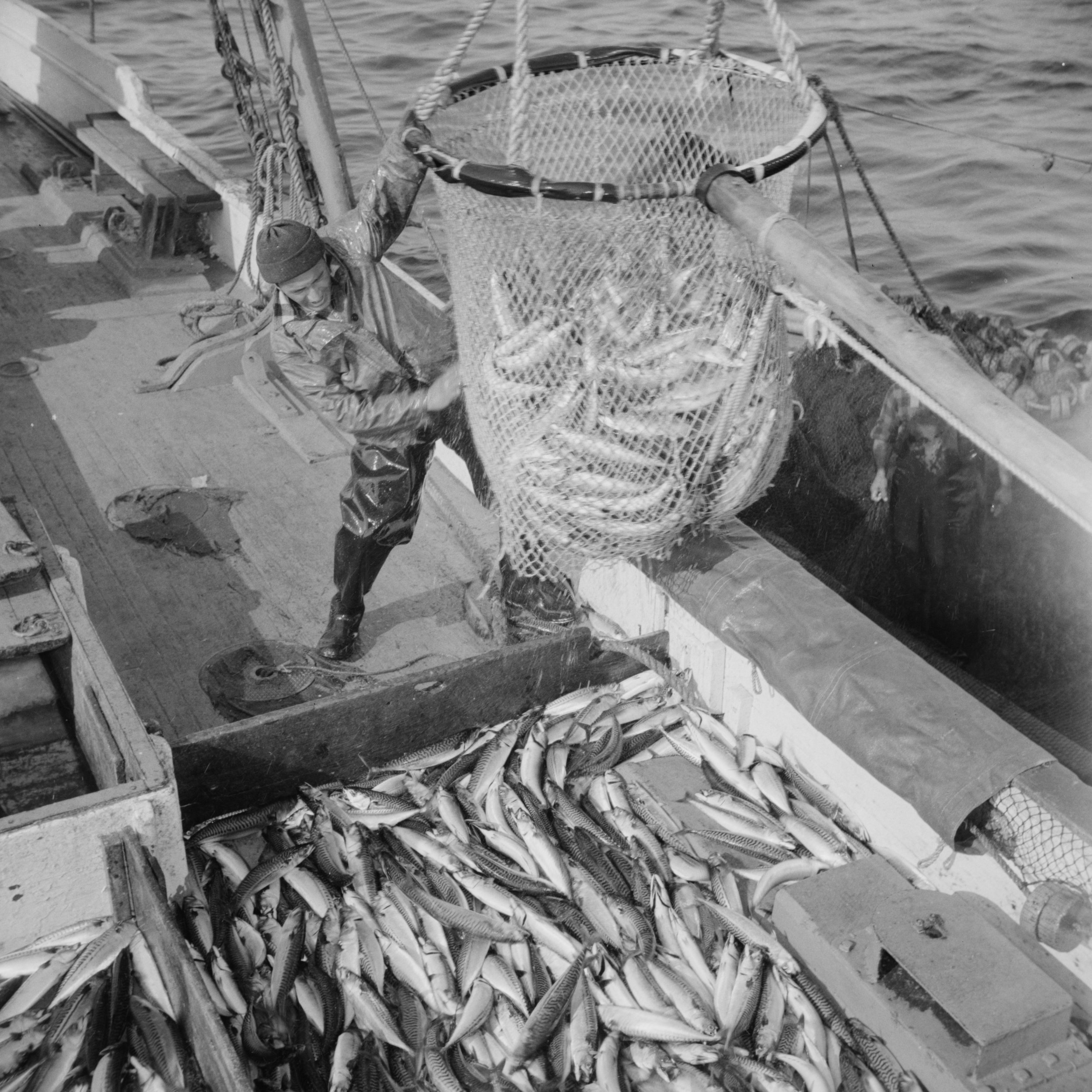




Back to Circa 1623


